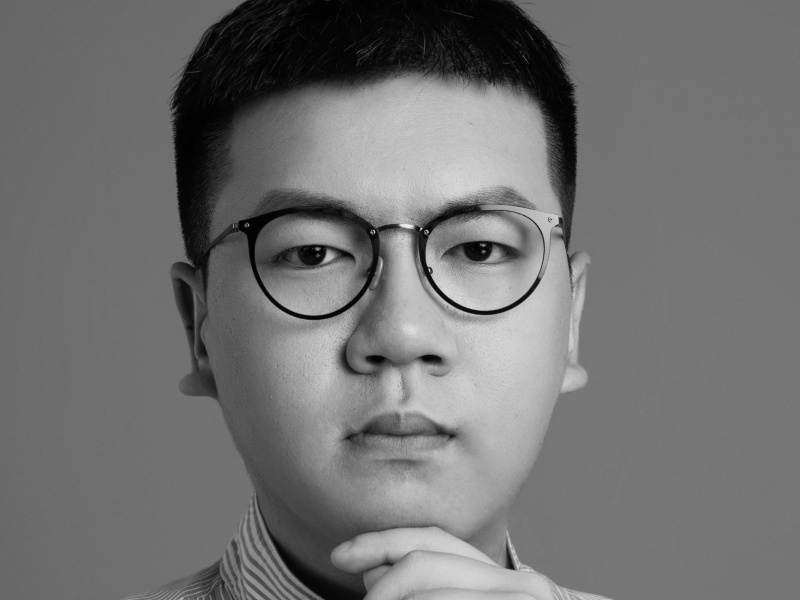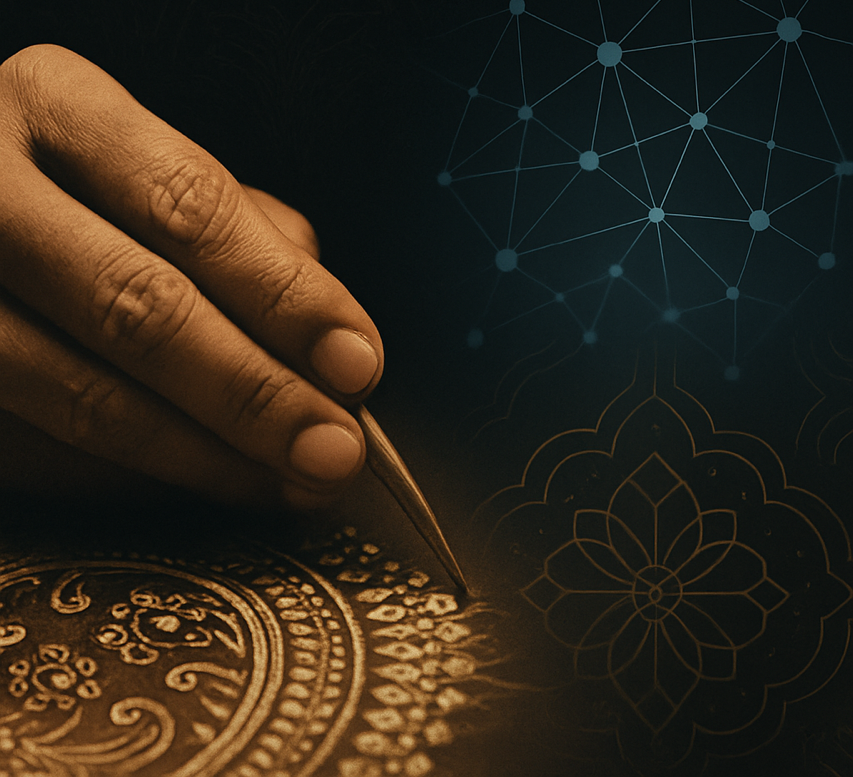While strong visual expression has long been favoured by the luxury industry, some brands are beginning to engage with new generations of consumers through podcasts, a purely audio medium. How does this new communication tactic measure up?

A 29-year-old girl named Penelope with a background in art history has just started her new job at the Hermès Bureau of Investigation and Research into Objects. Her job is to travel the world to unveil the stories behind various mysterious artefacts and discover their links to the house’s legacy. Her first stop is Lyon, France, where she is tasked with investigating an enigmatic inscription on a silk scarf. This leads to her visiting the Hermès store in the centre of Lyon and the textile atelier in Pierre-Bénite, south of Lyon, to uncover the love story behind the scarf that spans three decades.
While this might read like another well-produced short film by Hermès about the rich history and stories behind its scarves, it is in fact part of a new series of podcasts by the Maison. Realised completely in audio without any visual assets, the fictional series, Penelope’s Pursuits, is available on major audio streaming platforms such as Apple Podcast, Spotify and the brand’s website, with each 20-minute episode exploring a piece of the brand’s history and the tales behind its different objects.
Born out of the radio era, podcasts are not a new medium. Audio-focused and information-heavy, the channel was often viewed as an on-demand version of radio talk shows. However, as consumer behaviours evolved over the years, so did digital platforms. Visual media (image and video) became the dominant method of audience content consumption, with brands jostling for attention on every piece of digital real estate available.
Today’s generation of sophisticated digital-natives spend more than 10 hours a day in front of screens – and they are starting to show signs of fatigue. Consumers are now looking for less, and podcasts have emerged as the unexpected alternative. As an audio-only medium, they have become a refreshing way for the overwhelmed digital generation to consume content. While brands have leveraged podcasts for marketing purposes over the years, it was not until the past year or so that they have been embraced by some luxury brands as a new marketing channel to communicate about its products, brand story and corporate philosophy.
The Podcast Boom
This leap into the unknown is an adventurous one indeed. As an industry that prizes detail and craftsmanship, visuals have always been at the core of a luxury brand’s marketing strategy, whether in magazines, billboards, television or social media. Podcasts, with its focus on the audio experience, force luxury brands to step out of their comfort zone and experiment with a new way of communicating about products.
In the aforementioned podcast, Hermès wove in elements of the brand’s history; its top-notch textiles and embroidery techniques; its recently renovated store in Lyon and its made-to-measure service into a single fictional episode. The content in this podcast series does not deviate from the brand’s talking points, which have been often reproduced in various forms via text, images and video, on both online and offline platforms. Essentially, podcasts serve as a fresh channel for brand storytelling, and an extension of its content strategy.
Credit: Hermès
It is often argued that the content ecosystem is currently too saturated to effectively retain consumer attention – not because there are too few platforms available, but because there is too much homogenised content on the market. For instance, right after a brand’s runway show, the same images and videos are published one after another on the brand’s accounts across different digital platforms, then distributed to the media and influencers. Consumers are inundated by the same content over and over, and inevitably grow bored of the repetitiveness.
This is why producing differentiated content is crucial. Podcasts play outside the typical visual medium and force brands to create an entirely new type of content, without leveraging any existing assets – which might actually be a good thing.
In June 2018, in tandem with the launch of its first ‘Artisanal’ men’s collection, Maison Margiela kicked off its podcast series THE MEMORY OF… With John Galliano, featuring the brand’s creative director John Galliano explaining the aesthetic and concept behind his designs, stitch by stitch. Since then, the podcast series has been regularly updated with the launch of every new runway collection.
With Alessandro Michele at the helm, Gucci has also taken its podcast content a step further, starting the Gucci Podcast channel which has since grown into a platform that follows the brand’s marketing milestones. The brand’s key campaigns – such as its collaboration with The North Face; the launch of its first sustainable collection; and Gucci Beauty’s first lipstick collection – are accompanied by a podcast episode exploring the brand’s philosophy, whether at the social or aesthetic level, and its products.
Still Developing
Although the luxury sphere appears keen to explore audio content, this marketing strategy is still in its infancy. One glaring challenge is overcoming the monotony of the format. The medium in itself is limiting – brands have less room for creativity and can only control the narration and background music (which in most cases play a supporting role). As a result, most brand podcasts still take on the format of a solo monologue or a panel discussion (also known as ‘bantercast’). But with a plethora of such programmes available today, how can brands ensure that sophisticated listeners pick their content over that of professional media or industry experts?
In 2019, Miu Miu hosted three lunchtime debates titled Miu Miu Musings in London, New York and Beijing with experts and celebrities from all walks of life. Designed as a conversational space for guests to discuss topics ranging from the impact of mobile phones on today’s world to authenticity, the debates were recorded and launched as a series of podcasts after. Typically, brands would release video snippets or full recordings of such occasions to continue driving interest post-event, making Miu Miu’s podcast tactic an interesting and refreshing one.
Other brands have added a twist on the background music. In an episode of its Gucci Podcast, the brand interspersed interview snippets of the Chef de Cuisine of its Gucci Osteria in Florence, Michelin-starred Karime López, with ASMR clips of kitchen sounds. Having gained popularity in around 2010, the term ASMR (Autonomous Sensory Meridian Response) refers to a state in which the mind receives pleasure from auditory and visual stimuli – sometimes described as a calming, pleasurable feeling people feel in response to a specific type of audio or video (such as the sound of rain or even someone chewing). Successful ASMR videos on YouTube receive up to hundreds of millions of views.
In playing with kitchen sounds, the podcast not only breaks away from the monotony of the interview format, but adds more depth and context to the setting, allowing the listener to feel even more immersed and involved. This method of approaching the audio medium opens up a path for brands to create differentiated content that isn’t necessarily in-depth, but still entertains.
The Socialisation of Luxury Brands
According to Deloitte’s TMT Predictions 2020, podcast listeners are predominantly young, educated and employed, which largely overlaps with the target audience that luxury brands seek to reach in this new era. This group of consumers also tend to be more attuned to social issues, making it important for brands to be mindful when producing content to connect with this consumer group.
A “socialised” luxury brand is not one that is merely present on social media, but one that also shows its social responsibility, and willingness to speak up about topics that matter. Ever since Maria Grazia Chiuri took over as Artistic Director of Dior (also the first female artistic director of the house), voices of women have permeated all corners of the brand. This is evident across its many initiatives, including its DIOR TALKS podcast that delves into women-related themes – including Lady Art, Female Gaze and, most recently, Feminism. In addition, podcasts from other brands such as Chanel and Chloé have also touched on social issues relating to gender, race and environment.
Credit: Dior
As environmental, social and corporate governance (ESG) topics gain momentum over the years, especially after the outbreak of the pandemic, luxury brands need to step up their efforts in engaging with consumers on these topics in order to stay relevant. Podcasts offer an interesting channel for brands to communicate about their social responsibility with contemporary consumers, going beyond the traditional visual presentation of beauty. “I for one think that this is a new landscape to hear what brands about, without the use of image, without the adjacency to say a product within an image,” said Louis Vuitton’s Men’s Artistic Director Virgil Abloh about the audio medium at Business of Fashion’s VOICE 2020, “And that becomes compelling in the fashion industry when we can use our voice to create engagement.”
Podcast marketing in the luxury industry is still in its early stages, but much can be done with this medium as many leading luxury labels have already demonstrated. The format may be restrictive in many ways and might not necessarily drive direct customer conversions, but it certainly helps to cut through the noise and allows consumers to discover a brand in a different, refreshing way. Like all other brand building activities, results might not manifest in the short term – but this investment might just pay off in the long run.










